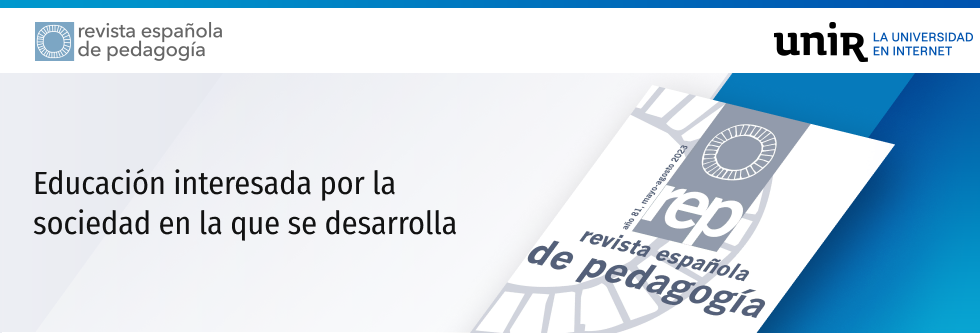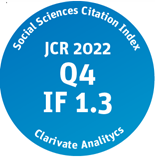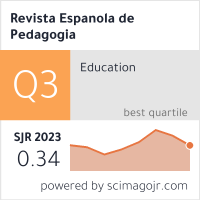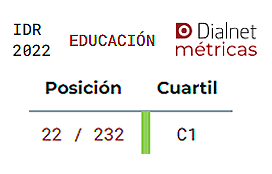Vol. LXXV (2017) - No. 268 El método socrático hoy. Para una enseñanza y práctica dialógica de la filosofía [The Socratic method today: For dialogical teaching and practice of philosophy].
Resumen
The interest in the figure of Socrates as a model of an attitude to life and an intellectual attitude and analysis of the so-called «Socratic method» have been ever-present throughout the history of Western thought. The recent Spanish translation of La muerte de Sócrates [The death of Socrates] by Romano Guardini (Ediciones Palabra, 2016), as well as the publication of Sócrates, hoplita de la polis [Socrates: Hoplite of the polis] by Eduardo Esteban, Eloge de Socrate [In praise of Socrates] by Pierre Hadot, ¿Matar a Sócrates? [Killing Socrates?] by Gregorio Luri, and Sócrates. La muerte del hombre más justo [Socrates: The death of the most just man], are proof of this renewed interest. The publication of this multi-author work, edited by Carmen Segura Peraita who is a professor of philosophy at Madrid Complutense University, is now part of this permanent commemoration of Socrates. ,
The nine contributions in this book coalesce around a common objective: studying the options for applying the Socratic method in the present day, in secondary-school and baccalaureate classrooms and at the level of university teaching, as well as in other areas of society (busi- nesses, organisations, public bodies, etc.). It is, therefore, a matter of reconstructing and bringing up to date the practice of the Socratic method in a setting that, in principle, appears to be openly hostile to it, given the utilitarian and pragmatic obsession that presides over the contemporary world. ,
When talking about the «Socratic method», we are not referring to specific techniques and procedures shaped by an agreed and exacting idea (indeed, there is no unanimous agreement about what it means and what it comprises), but rather an attitude, a way of seeing the world and understanding reality. Irony – the recognition of one’s own ignorance – and maieutics – the art of drawing out an argument – would be the two fundamental moments in this existential inclination that leads teachers to commit themselves to the moral education of their students, fostering their intellectual maturity through dialogue, self-analysis and reflection. ,
In «Reclaiming the Socratic method in contemporary education», Astrid Acha describes her personal experience in a primary school when trying to implement the Socratic method as a teacher of the philosophy and citizenship subject. She starts by briefly explaining the two phases of the method in the context of the classroom: irony is a deconstructive, negative, or preparatory phase that involves asking students questions of the «what is X?» type, with the teacher refuting the answers (the objections are not based on saying the opposite of what the student states, but on saying it in a different way) with the objective being that the students become able to recognise that they are ignorant of something they thought they knew (the first true wisdom, similar to the docta ignorantia of the ancients, would reside in this recognition of our ignorance or of the limits of our knowledge); maieutics, in contrast, is a constructive and positive phase of enquiry that «involves guiding the students’ responses towards the universal definition through inductive reasoning» (p. 13), so that the teacher acts as a guide who teaches stu- dents to advance by themselves. If the first phase corresponds to the metaphor of the ray, the second is represented by the image of the midwife who helps the children to give birth. ,
The primary difficulties in implementing the Socratic method in the classroom are the large number of students, the limited closeness, and trust that exists between the teacher and the students, the supposed status of the teacher as an authority figure in full possession of knowledge, curricular requirements, and the need for evaluation of content and of a specific subject matter. Nonetheless, teachers must make an effort to take this desire for self-examination and examination of others, the search for the universal definition and the pedagogical aim of creating good people to the classrooms. Their ultimate goal must be to encourage independent and critical thought among their students, as well as fostering their intellectual and moral maturity. ,
From an eminently practical perspective, and in the context of philosophical consultancy or guidance, Dries Boele explains in «The benefits of Socratic dialogue» the success that Socratic dialogue has achieved in the Netherlands as a way for groups to consider topics such as re- sponsibility, mutual trust, and ethical values, whether with individuals, in businesses or in the training of professionals. Boele starts by explaining what this practice entails and what its results are, then analyses the concept of philosophy on which it is based, and finally lists its principal benefits. The final conclusion he reaches is that Socratic dialogue, whose basic slogans are «know yourself» and «dare to use your intelligence», might be regarded as an exercise in personal ethics and an effective tool for developing the art of living. ,
In «The secret of the Socratic method: Successes and failures», Beatriz Bossi refl on the maieutic abilities (and weaknesses) displayed by Socrates in some Platonic dialogues such as Gorgias, The Symposium, and Phaedrus to establish how they can act as inspiration in the task of teaching. She concludes that there is a need to consider not just the students’ intellectual side but also their emotional side, so that teacher shows that they dominate their art of birthing a discourse but a new way of living. ,
Beyond its destructive character, already extensively studied by Martha Nussbaum, in «Old and new shame: The powerful recognition of powerlessness through Socratic dialogue» Laura Candiotto analyses how Socrates uses the sense of shame to achieve the purification of his interlocutors, and questions whether we should reject the figure of the teacher inspired by Socrates, seeing it as a «bad teacher» who humiliates students. To do this, she focusses on analysis of feelings and the role that «emotional intelligence» plays in any shared knowledge-construction process. From the perspective of Socratic dialogue, compassion could even be reinterpreted in light of the need to turn shame into a sort of love for one’s neighbour. ,
In «The use of the Socratic method in the analysis of texts» Juan José García Norro suggests «developing a procedure that facilitates active learning and discovery by the students of some of the content that comprises a subject area» (p. 93). As a result of the large number of students usually found in classrooms, oral work must be complemented by work on written texts, which are often used as preparatory work for reflection and subsequent group discussion during the learning-teaching process. ,
Understanding the text is just the start of this task; students must link what the text discusses with phenomena and circumstances from their everyday lives, understanding that it is about something that affects them (despite the age of the author or the apparent distance of the content of the text); finally, the student has to adopt a stance towards the topic covered, that «argues for or against the proposals in the text, that finds new illustrations of what is said in it, that applies what it recommends to other similar situations, etc» (p. 99). The practical example developed step by step by García Norro concerning «The concept of democracy of Classical Athens» is very illustrative. ,
In «Question, purification, and state of mind», Carmen Segura tries to define the difference between training and education, sets out a reflection about the nature of dialogue, and ends with a proposal for practice based around commentary on philosophical texts. For his part, José Sánchez Tortosa explains the launch of the «Telemachus Project», an attempt to apply new technologies to the development of the dialectic method among students. And in «How to direct a Socratic dialogue» Kristof Van Rossem sets out the specific case of his experience in managing and guiding Socratic dialogue with university students, defining it as «a conversation in which one or more participants investigate a) the truth of affirmations from one’s own experience or from the experience of another person, and b) the value of the arguments that given in these propositions» (p. 140). ,
Finally, in «Asking about things you already know: Socratic process and teaching philosophy», Guillermo Villaverde López questions the viability of putting into practice the Socratic method in the classroom, while reappraising the figure of Socrates as a support for introducing important topics to students, such as «a) what is philosophy in general; b) what the theoretic/scientifi attitude comprises, and what is the re- lationship between philosophy and sci- ence; c) what is the moral attitude, and d) in what way is rational dialogue (the “linguistic play of validity”) related to b) and c)» (p. 173). ,
In conclusion, the Socratic method is shown in this joint publication as a powerful antidote to narrow visions that reduce education to mere technical instruction, as it aims to awaken in the students a true and permanent desire to know, in such a way that they themselves are the active protagonists in their own learning. So, following the classic image of the midwife, the teacher becomes a mentor who accompanies and guides the students and is existentially involved in their all-round education and in their moral development, personifying the ethical dimension of true education, since educating is ultimately teaching how to live. ,
Ernesto Baltar ■
Citación recomendada | Recommended citation
Baltar, E. (2023) . Vol. LXXV (2017) - No. 268 El método socrático hoy. Para una enseñanza y práctica dialógica de la filosofía [The Socratic method today: For dialogical teaching and practice of philosophy].. Revista Española de Pedagogía(1). https://www.revistadepedagogia.org/rep/vol0/iss1/65
Licencia Creative Commons | Creative Commons License
Esta obra está bajo una licencia internacional Creative Commons Atribución-NoComercial 4.0.
This work is licensed under a Creative Commons Attribution-NonCommercial 4.0 International License







Commentarios | Comments
Segura Peraita (Ed.) (2017).